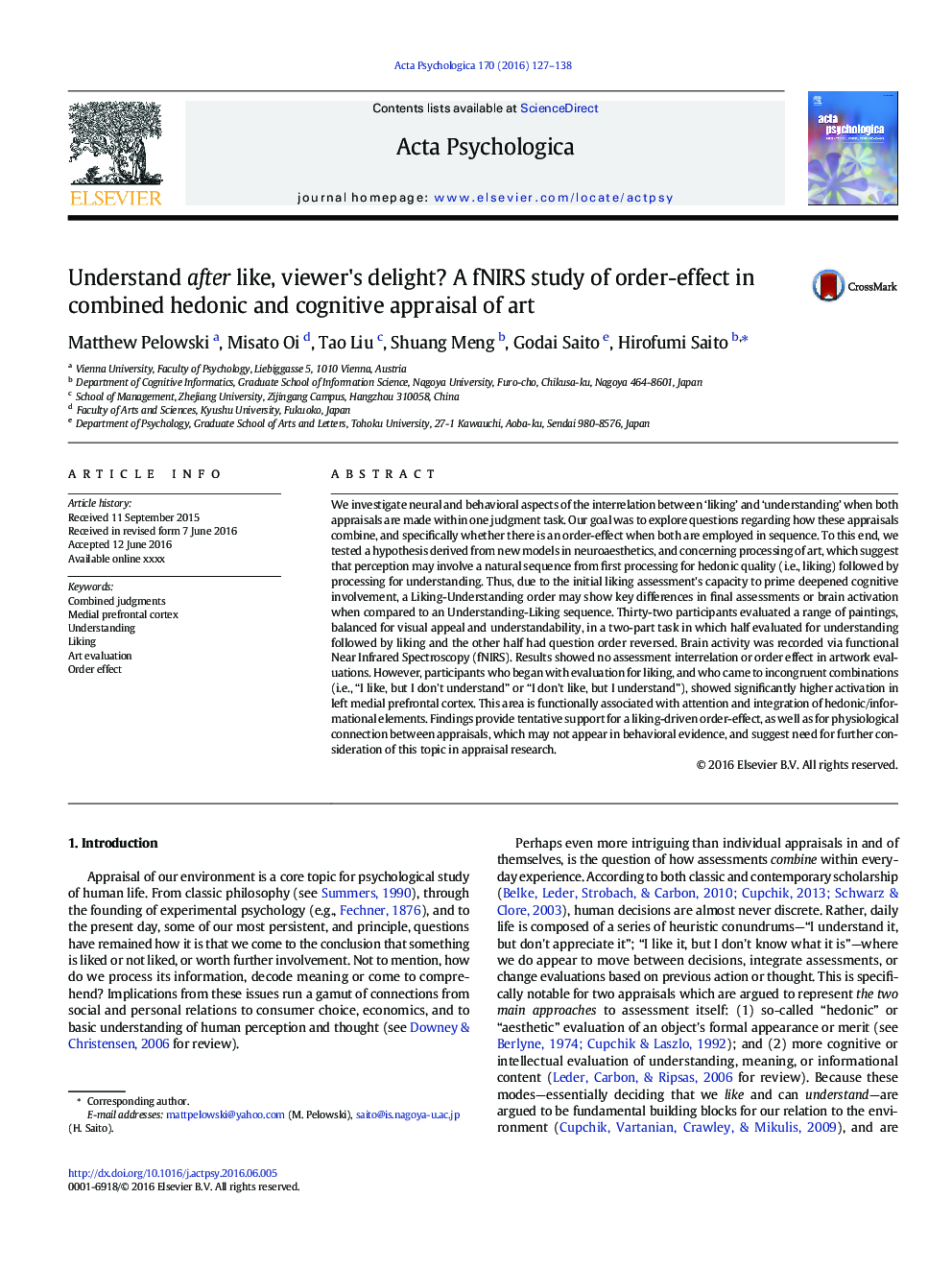| Article ID | Journal | Published Year | Pages | File Type |
|---|---|---|---|---|
| 7276980 | Acta Psychologica | 2016 | 12 Pages |
Abstract
We investigate neural and behavioral aspects of the interrelation between 'liking' and 'understanding' when both appraisals are made within one judgment task. Our goal was to explore questions regarding how these appraisals combine, and specifically whether there is an order-effect when both are employed in sequence. To this end, we tested a hypothesis derived from new models in neuroaesthetics, and concerning processing of art, which suggest that perception may involve a natural sequence from first processing for hedonic quality (i.e., liking) followed by processing for understanding. Thus, due to the initial liking assessment's capacity to prime deepened cognitive involvement, a Liking-Understanding order may show key differences in final assessments or brain activation when compared to an Understanding-Liking sequence. Thirty-two participants evaluated a range of paintings, balanced for visual appeal and understandability, in a two-part task in which half evaluated for understanding followed by liking and the other half had question order reversed. Brain activity was recorded via functional Near Infrared Spectroscopy (fNIRS). Results showed no assessment interrelation or order effect in artwork evaluations. However, participants who began with evaluation for liking, and who came to incongruent combinations (i.e., “I like, but I don't understand” or “I don't like, but I understand”), showed significantly higher activation in left medial prefrontal cortex. This area is functionally associated with attention and integration of hedonic/informational elements. Findings provide tentative support for a liking-driven order-effect, as well as for physiological connection between appraisals, which may not appear in behavioral evidence, and suggest need for further consideration of this topic in appraisal research.
Related Topics
Life Sciences
Neuroscience
Cognitive Neuroscience
Authors
Matthew Pelowski, Misato Oi, Tao Liu, Shuang Meng, Godai Saito, Hirofumi Saito,
